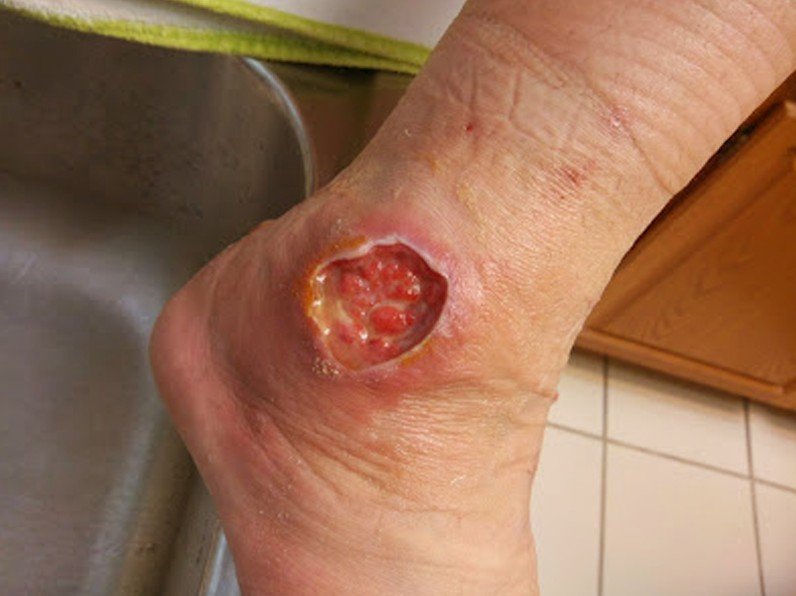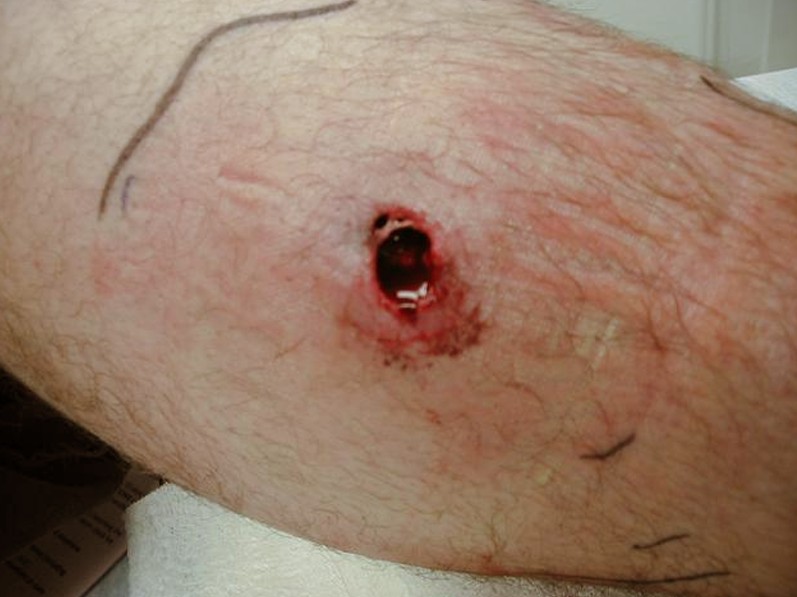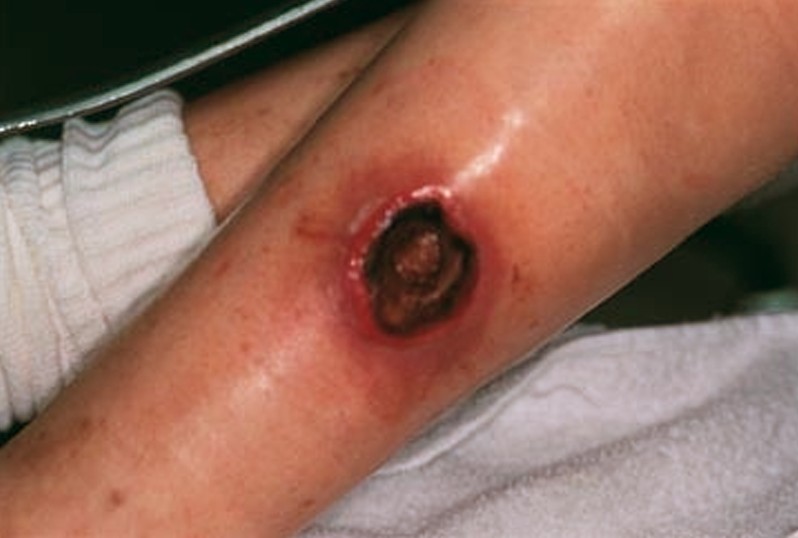Brown Recluse Spider Bite
Last reviewed by Dr. Raj MD on January 12th, 2022.
This particular species of spider also has three other names which are:
- American recluse spider
- Fiddleback spider
- Violin spider
This dangerous spider is between six and twenty millimeters long (one-fourth to three-fourth of an inch) but there are some that could grow even longer. Their color can range from light tan to brown and some are even a deep yellow color. You can tell a brown recluse spider by the markings on their body which is a black line from the center and looks like a violin. The neck of the violin will be pointing to the back of the brown recluse spider. These spiders can be found in a variety of places such as:
- Woodpiles
- Closets
- Sheds
- Garages
- Cellars
Since they prefer a place that will be undisturbed for a long period of time and is dry, they could be virtually anywhere. They have even been found in bed sheets, stacks of clothes, your shoes, behind picture frames, etc. The webs have disorderly threads and hunt at night. The spiders that are natives of the United States is called the American recluse spider and can be found in areas from the Gulf of Mexico to the southern Midwest.
When they feel threatened they will bite or if they are in your stack of clothes, bed sheets, shoes, etc, and are pressed against human skin the spider will bite because they feel threatened. The bite does contain venom, and is more potent than the venom of the rattlesnake; the spider will usually inject a small quantity of the venom in a person so it is not life-threatening unless you have low immunity. In this case, the bite can kill you. Many of the deaths from this bite are to children under the ages of seven. Because there is only a stinging sensation where you are bit but not much pain, most of the time you do not know you have bitten.
Symptoms
At the site of the bite a small blister can form along with a stinging feeling, redness, and some pain. The affected area may also become swollen. Within a few hours after you have been bitten you may experience:
- Severe itching on the area that was bitten
- Vomiting
- Fever
- Nausea
- Restlessness
- Swelling and pain in the area of the bite
- Muscle pain
- At the site of the bite there may be tiny fang marks
- Chills
Stages
When you are bitten by this type of spider there are three stages that a person can go through.
Stage 1
As mentioned there is just a stinging sensation but no pain but after approximately six hours the enzymes like Sphingomyelinase D, start to damage the tissues in your body. This starts to trigger immune responses from your immune system to separate the venom. By the time you are in this stage you are starting to feel intense pain along with itching. You may also experience:
- Inflammation
- In some cases, the formulation of pustules
- Blistering
Stage 2
At this stage the spider bite progresses to involve the destruction of your red blood cells, causing the supply of oxygen to your skin where the bite occurred to stop. When your skin is denied the oxygen it needs your skin begins to turn gray and in the middle of this area of grey skin there is a small red-colored spot. This spot is caused by the bite of the spider and around that skin area there may be a halo that is light red in color.
Stage 3
At this stage, if the venom has reached your bloodstream through the capillaries, it could start to affect your whole body. This condition is called systemic loxoscelism. You can identify this stage by the gray skin of stage 2 along with these other symptoms.
- Fever
- Chills
- Nausea
- Dizziness
You may also have a rash with small dots that are red-colored on areas of your body that did not have a bite. This condition is referred to as morbilliform rash. When your body has this condition it signals that the venom the brown recluse spider injected into your body with a bite is not circulating in your whole bloodstream. If it has entered your blood stream it can lead to kidney failure, seizures, and even a coma so it is imperative that at this stage you seek immediate treatment.
Treatment
If you know you have been bitten by a spider, before treatment is done, try to make sure what type of spider it is so you can get the proper medical treatment. If you can, kill it and save it to show your physician if you need to visit the doctor for treatment.
If you know that it was a brown recluse spider that bit you, the treatment would be:
- At the site of the bite you should apply an ice pack
- In order to ensure that the venom does not travel to the rest of your body you can tie a piece of cloth along the limb where the bite occurred.
- To help soothe the pain you can apply Aloe Vera to the area
- Make sure that you clean the area of the bite with warm water and soap. Do not scrub the area
- To help prevent infection you can apply over-the-counter antibiotic cream
- If the bite is on your leg or arm, you should try to elevate them.
- If there is further medical treatment needed, call your physician
If it is a child who has been bitten by a this type of spider, especially if the child is under seven years of age, you should seek immediate treatment. In some rare cases hospitalization or surgery may be needed. For the spider bite to completely heal, it can take from six to eight weeks.
Brown Recluse Spider Bite Pictures
Pictures, Photos and Images collection of Brown Recluse Spider Bite….




